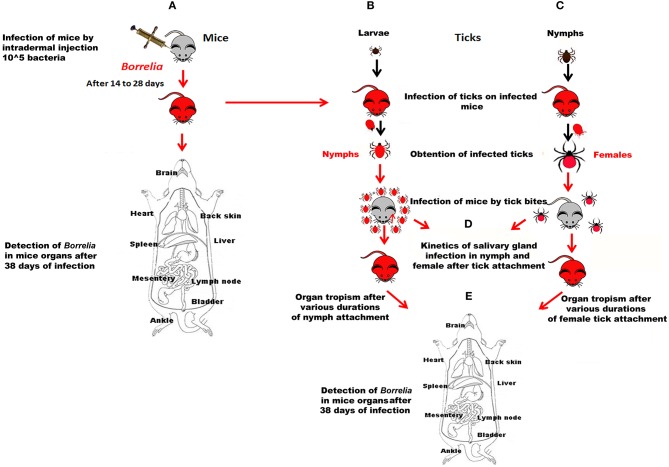Figure 1.
Data acquisition workflow. (A) Mice were infected by subcutaneous inoculation of 105 bacteria. Their infection status was controlled by PCR after ear biopsy. Borrelia-positive mice were either used for infecting larvae or nymphs (B,C respectively) or dissected 38 days after infection; B and C. Borrelia-negative larvae or nymphs were fed on Borrelia-positive mice. After molting, their rate of infection was determined; (D) Ten Borrelia-exposed nymphs or 3 Borrelia-exposed females were fed on Borrelia-negative mice. The kinetics of infection of their salivary glands was determined after different duration of tick attachment; (E) Mice exposed to the bite of Borrelia-exposed nymphs or female ticks for different durations of tick attachment were dissected 38 days after tick bite.

